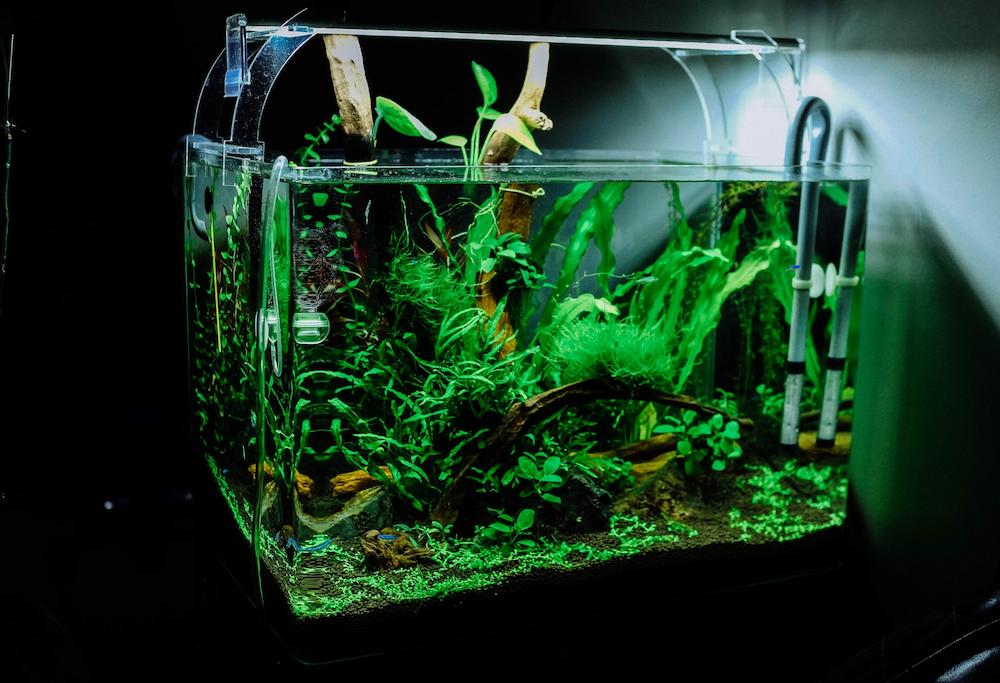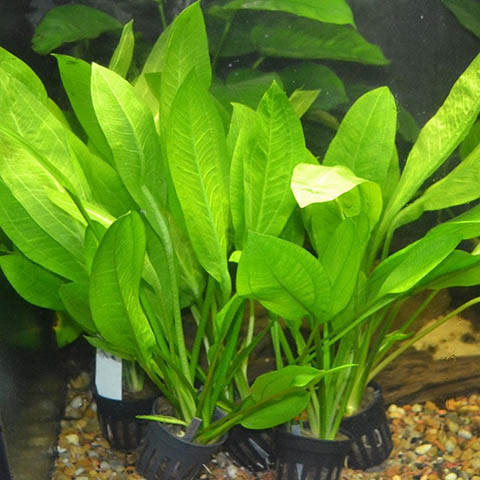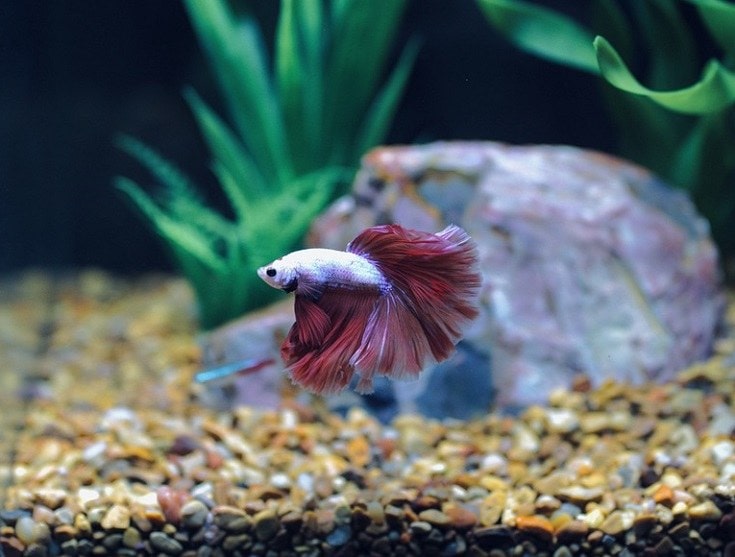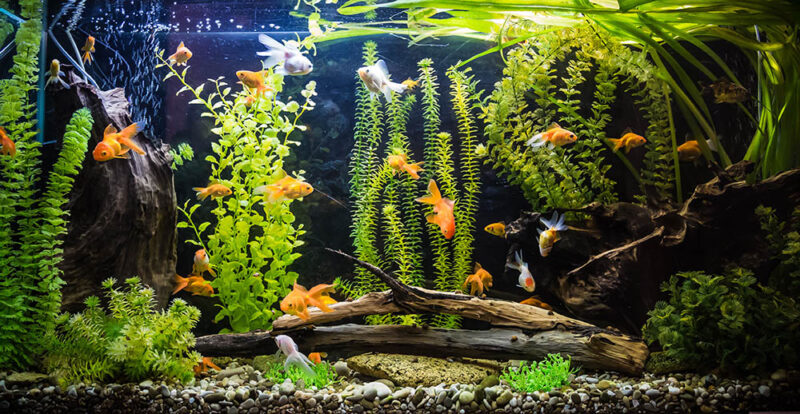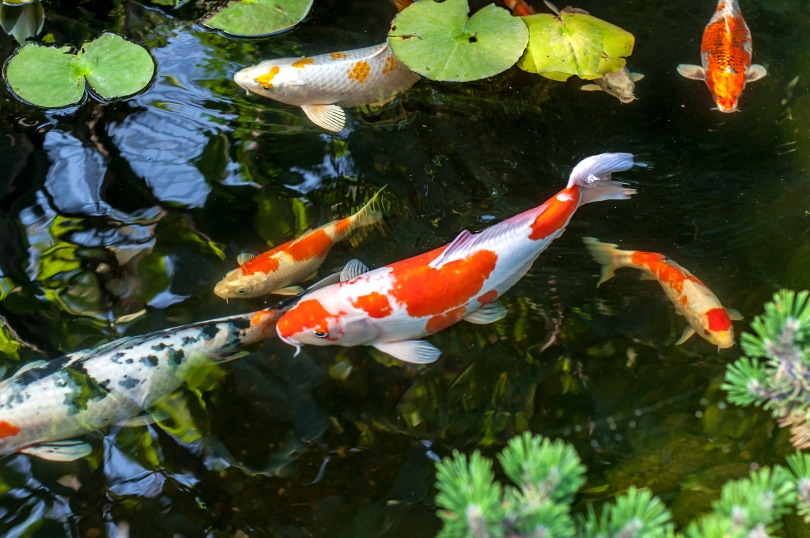Aquarium plants add stability to your aquarium and support the natural biome to maintain balance in the closed ecosystem. Plants also benefit your fish by providing a calm and soothing environment, as well as numerous hiding spots.
With the right plants, you can turn your aquarium into a work of art that celebrates nature in your home or office. If you have a cold-water aquarium, you can get cold water plants that are ideal for your fish and require minimal care.
Whether freshwater or marine, here are the best cold water aquarium plants, based on reviews from aquarists like you.
A Glance at Our Top Picks in 2024
| Image | Product | Details | ||
|---|---|---|---|---|
| Best Overall |

|
Java Fern |
|
Check Price |
| Best Value |

|
Marimo Moss |
|
Check Price |
| Premium Choice |

|
Anacharis |
|
Check Price |

|
Jungle Vals |
|
Check Price | |

|
Amazon Sword |
|
Check Price |
The 10 Best Cold Water Aquarium Plants
1. Java Fern – Best Overall
| Growth rate: | Slow |
| Max height: | 9–11 inches |
| Light demands: | Low-light tanks |
| CO2: | Low |
| Difficulty: | Easy |
The Java Fern is the best overall cold water aquarium plant for your tank, due to its wide availability and simple care requirements. This durable and elegant plant is ideal for tanks with energetic fish, such as cichlids, but is suitable for all types of cold-water environments. Java Ferns thrive in with a pH of 6.0 to 7.5, and temperatures of 60°F to 82°F.
This fern can grow up to 11 inches tall, depending on the light availability. Beginners who aren’t familiar with aquarium plants can succeed with the forgiving Java Fern, which suffers beginner errors and can handle low CO2 and fluctuating water temperatures. Because the Java Fern grows slowly, it’s low maintenance. The Java Fern can block light and nutrients from lower growing plants, however.
2. Marimo Moss – Best Value
| Growth rate: | Slow |
| Max height: | 8–12 inches |
| Light demands: | Low to medium direct light |
| CO2: | Low |
| Difficulty: | Easy |
Marimo Moss balls are the best cold water aquarium plants for the money. They have a unique round shape that’s easy to incorporate into your aquarium, and they improve water quality by generating oxygen and removing nitrates. The green spheres look attractive in your aquarium, especially with taller plants.
These moss balls thrive in cooler temperatures below 77°F, and don’t require special or high-intensity lighting. They’re ideally suited for direct light for photosynthesis. They’re low maintenance and thrive in a pH of 6.0 to 8.0. The only downside to Marimo Moss is that some fish and invertebrates, such as goldfish and crayfish, will eat them. They will not thrive in warm water or high temperatures with bright, constant light.
3. Anacharis – Premium Choice
| Growth rate: | Moderately fast |
| Max height: | 3 inches |
| Light demands: | Moderate |
| CO2: | Low |
| Difficulty: | Easy |
Anacharis is an attractive, premium aquarium plant with long stems and small green leaves. The plant grows quickly and offers good cover for thinner-stemmed plants and aquarium inhabitants that like to hide. With the ideal conditions, Anacharis can grow quickly and reaches its maximum height.
The plant prefers soft to moderately hard water with a pH of 5.0 to 7.5 and moderate lighting. It can grow with no substrate and suffers inadequate water conditions, making it ideal for beginners. Because it grows so well, it’s not ideal for small aquariums and can deprive the water and aquarium inhabitants of oxygen.
If you're new to the world of goldfish keeping or are experienced but love to learn more, we highly recommend you check out the best-selling book, The Truth About Goldfish, on Amazon.
From diagnosing illnesses and providing correct treatments to proper nutrition, tank maintenance and water quality advice, this book will help you to ensure your goldfish are happy and to be the best goldfish keeper you can be.
4. Jungle Vals
| Growth rate: | Fast |
| Max height: | 4–7 inches |
| Light demands: | Bright lighting |
| CO2: | Not requires |
| Difficulty: | Easy |
Jungle Vals is a fast-growing aquarium plant that mimics natural grasses in your aquarium. It thrives in bright lighting and requires no CO2, similar to its native environment. Jungle Vals will grow quickly and reach 4 to 7 inches, though it can grow several feet in tall aquariums. Because of its growth, the Jungle Vals requires more trimming than other aquarium plants.
The water should be between 64°F and 82°F for the Jungle Vals to thrive, and the preferred pH range is between 6.0 and 9.0. That said, the Jungle Vals is hardy and can thrive in a range of water conditions, making it a good choice for beginner aquarists. One of the major benefits of keeping Jungle Vals is that it absorbs chemicals in the tank and keeps your fish safer.
5. Amazon Sword
| Growth rate: | Slow |
| Max height: | 18–20 inches |
| Light demands: | Medium |
| CO2: | Low |
| Difficulty: | Easy |
Amazon Swords are ideal for community aquarium plants and grow beautiful, full green leaves. The sword-shaped leaves give the Amazon Swords their name, and they mix well with other plants in the aquarium. Amazon Swords are hardy and forgiving, making them a good choice for beginners.
Amazon Swords do require medium lighting, but they have a low demand for CO2, which they can produce themselves when healthy. The ideal temperature for an Amazon Sword plant is between 60°F–82°F, and the pH tolerance is 6.5 to 7.5. These plants do grow slowly, however, and only produce a few new leaves each growth spurt.
6. Water Lettuce
| Growth rate: | Fast |
| Max height: | 2–10 inches |
| Light demands: | Medium |
| CO2: | Not required |
| Difficulty: | Easy |
Water Lettuce is a floating aquarium plant with roots that can float in the water, so it requires not substrate. Water Lettuce has wide green leaves that lie flat, making it an attractive addition to your aquarium. Fish and other aquarium inhabitants can take shelter beneath the flat leaves.
Along with cover, these plants maintain water quality and consume large amounts of ammonia, nitrites, and nitrates to keep your fish and invertebrates healthier. Water Lettuce prefers partial shade and should be introduced to full light slowly, however. The ideal temperature range is 72°F to 86°F, and the pH should be between 6.5 to 7.5. Water Lettuce can grow abundantly and may block light from lower plants.
7. Java Moss
| Growth rate: | Medium |
| Max height: | 5 inches |
| Light demands: | Low |
| CO2: | Low |
| Difficulty: | Easy |
Java Moss is an overhanging aquarium plant that’s low maintenance and ideal for beginners. It grows in no particular pattern, so it can be used in conjunction with other plants to provide cover for fish and invertebrates. It can attach to different surfaces, including driftwood, gravel, and rocks. With its maximum height of 5 inches and horizontal growth, it makes a good filler for taller plants.
Java Moss thrives in temperatures between 59°F – 86°F and a pH of 5.0 to 8.0. Though this plant is good for beginners, it can become overgrown and may make the aquarium look poorly maintained, so it’s important to aquascape to create an attractive look. It should also be balanced with plants that grow vertically, rather than other horizontally growing plants.
8. Hornwort
| Growth rate: | Rapid |
| Max height: | 10 inches to 10 feet |
| Light demands: | Moderate |
| CO2: | Low |
| Difficulty: | Easy |
Hornwort is a well-known aquarium plant with fluffy green leaves that grow quickly. It filters ammonia, nitrites, and nitrates out of the water, keeping aquarium inhabitants healthy. Because Hornwort uses the same nutrients as algae to grow, it can keep algae from proliferating. It can compete with other plants for nutrients and resources, however.
Hornwort will grow both horizontally and vertically, providing filler and cover for fish and invertebrates. It has few demands of water conditions and can thrive in both soft and very hard water. The ideal conditions are a pH between 6.0 and 7.5 and a temperature range of 59°F – 86°F.
9. Ludwigia Repens
| Growth rate: | Fast |
| Max height: | 12–20 inches |
| Light demands: | Medium to high |
| CO2: | Low |
| Difficulty: | Moderate |
Ludwigia Repens is a versatile plant that adds color to your aquarium. It has moderate care needs, including appropriate lighting, to produce color. As a background plant, the rich red color provides a nice contrast to the greens of most aquarium plants. Ludwigia Repens won’t compete for resources with other plants, so it’s suitable for community aquariums.
This plant has moderate care needs and isn’t suitable for beginners. It does well in moderate-to-high lighting conditions and can tolerate temperatures between 60°F and 86°F. The ideal pH tolerance is between 5.0 and 8.0. Ludwigia Repens can thrive in very soft or very hard water.
10. Anubias
| Growth rate: | Slow |
| Max height: | 16 inches |
| Light demands: | Low |
| CO2: | Low |
| Difficulty: | Easy |
Anubias is a hardy aquarium plant that has low demands for light and CO2. It grows slowly, especially in low light, and works well for beginner aquarists. As a background plant, the Annubias provides hiding places for aquarium inhabitants. If the plant receives more light and CO2, it will grow more quickly.
The temperatures for Anubias can range between 72°F and 82°F. The pH changes and lighting changes won’t bother this plant. You can control the growth of the Anubias or trim it and use it to grow in multiple tanks. Though it’s tolerant of many different conditions, it does not do well in bright lighting.
Buyer’s Guide: Buying the Best Cold Water Aquarium Plant
Why Use Live Plants in Your Cold-Water Aquarium?
Keeping plants in a cold-water aquarium offers numerous benefits, including:
It’s important to consider the plants you put in your aquarium. Your plants should coexist together without competing for resources, and make sure to balance tall, fast-growing plants with filler plants and horizontally growing plants.
Some fish and invertebrates will eat or destroy the plants in your aquarium, so consider if your plants are appropriate for your particular fish and invertebrate species.
Conclusion
The aquarium plants you use in your cold-water aquarium make a great addition for to both your fish and the aesthetic. Based on reviews, these are our top picks for cold water aquarium plants. The Java Fern is the best overall cold water aquarium plant for your tank, due to its wide availability and simple care requirements. Marimo Moss balls are the best cold water aquarium plants for the money and help to keep your aquarium healthy. Anacharis is the premium choice and grows quickly to provide cover for your aquarium inhabitants.
Featured Image Credit: Huy Phan, Unsplash
